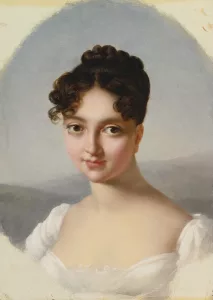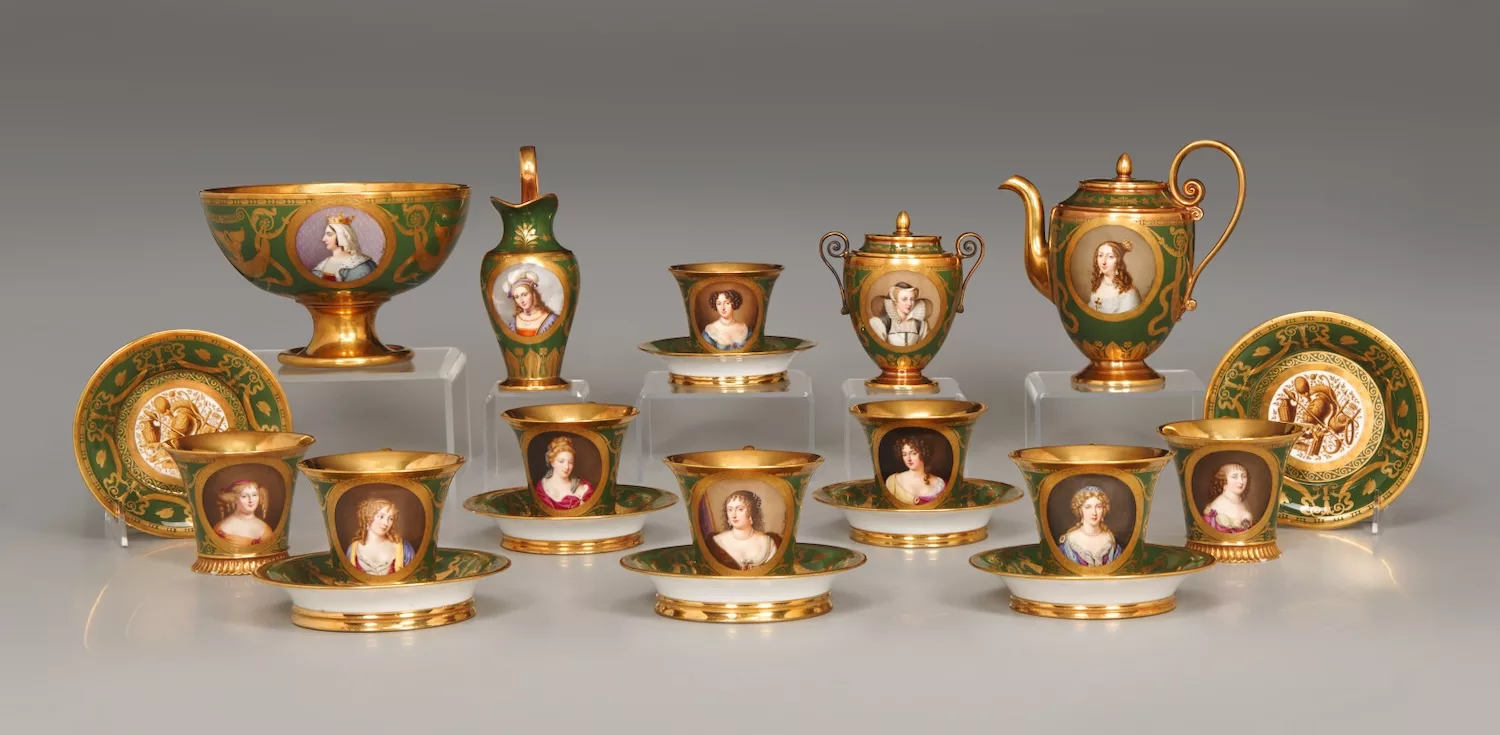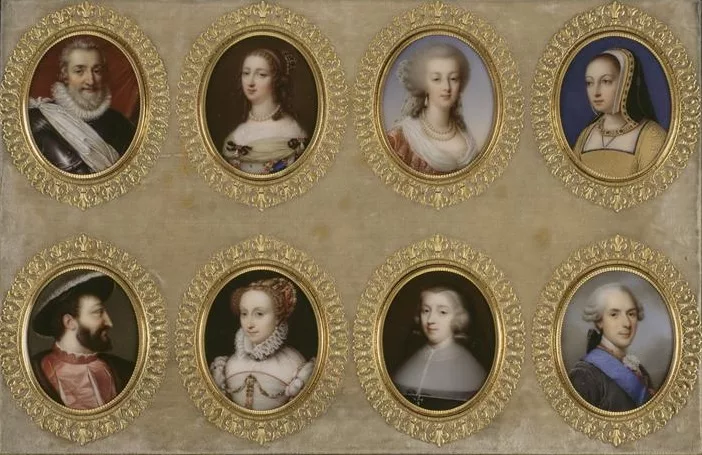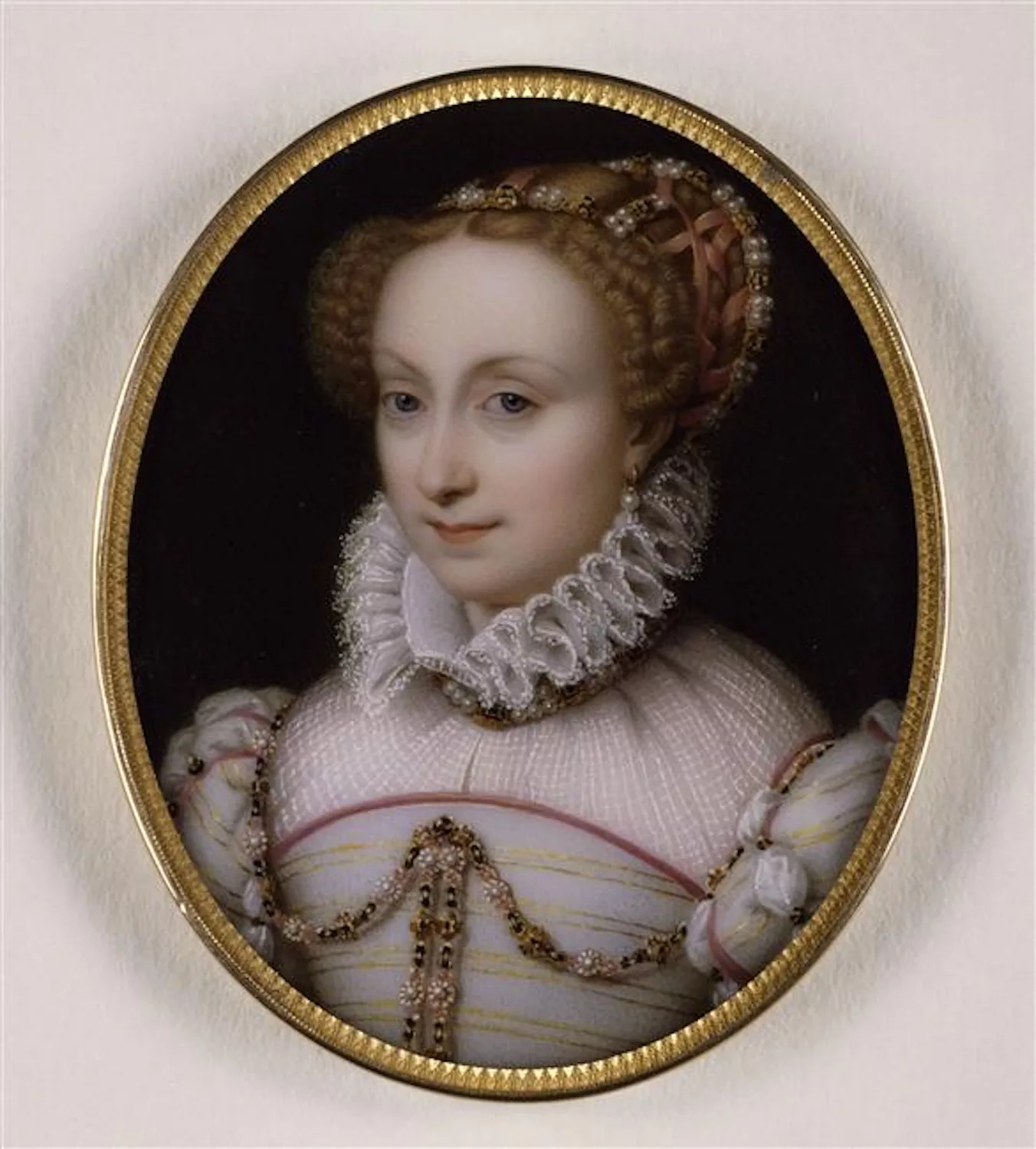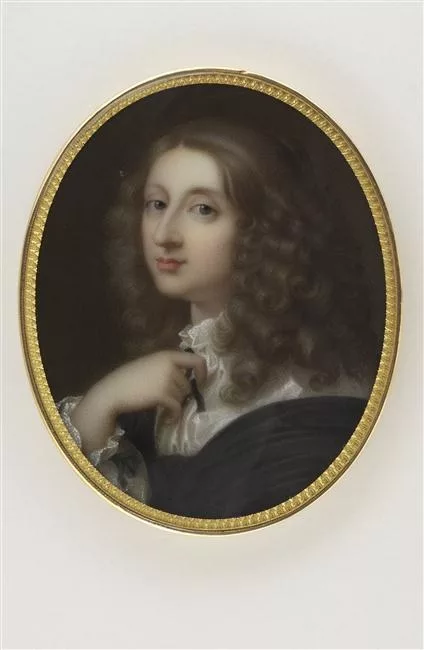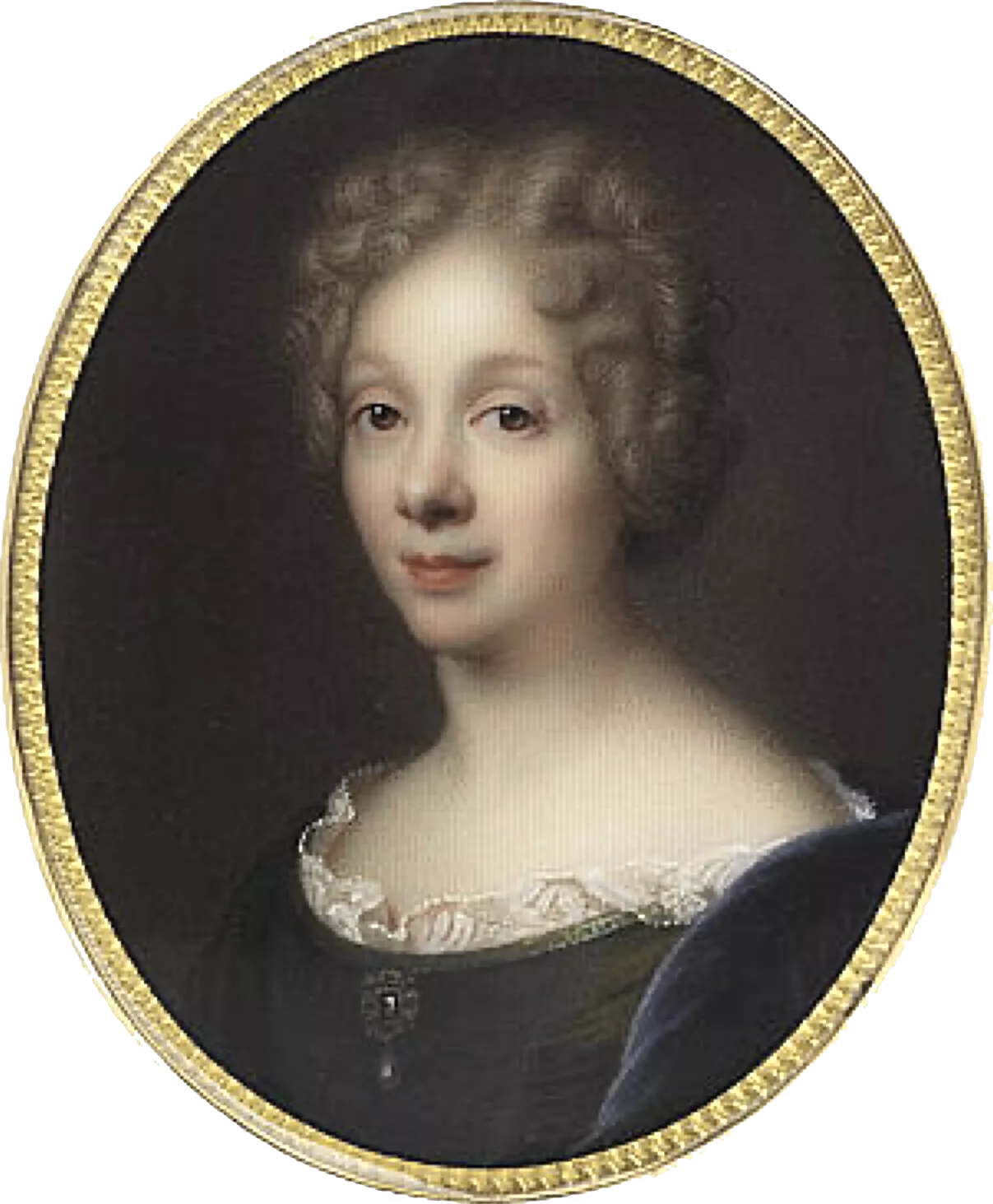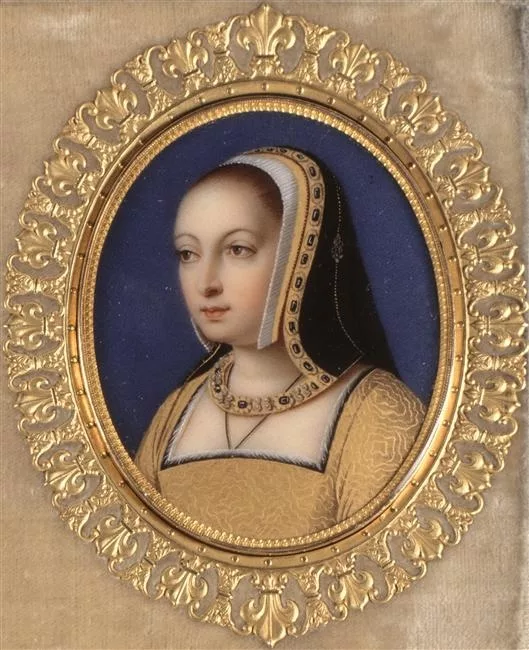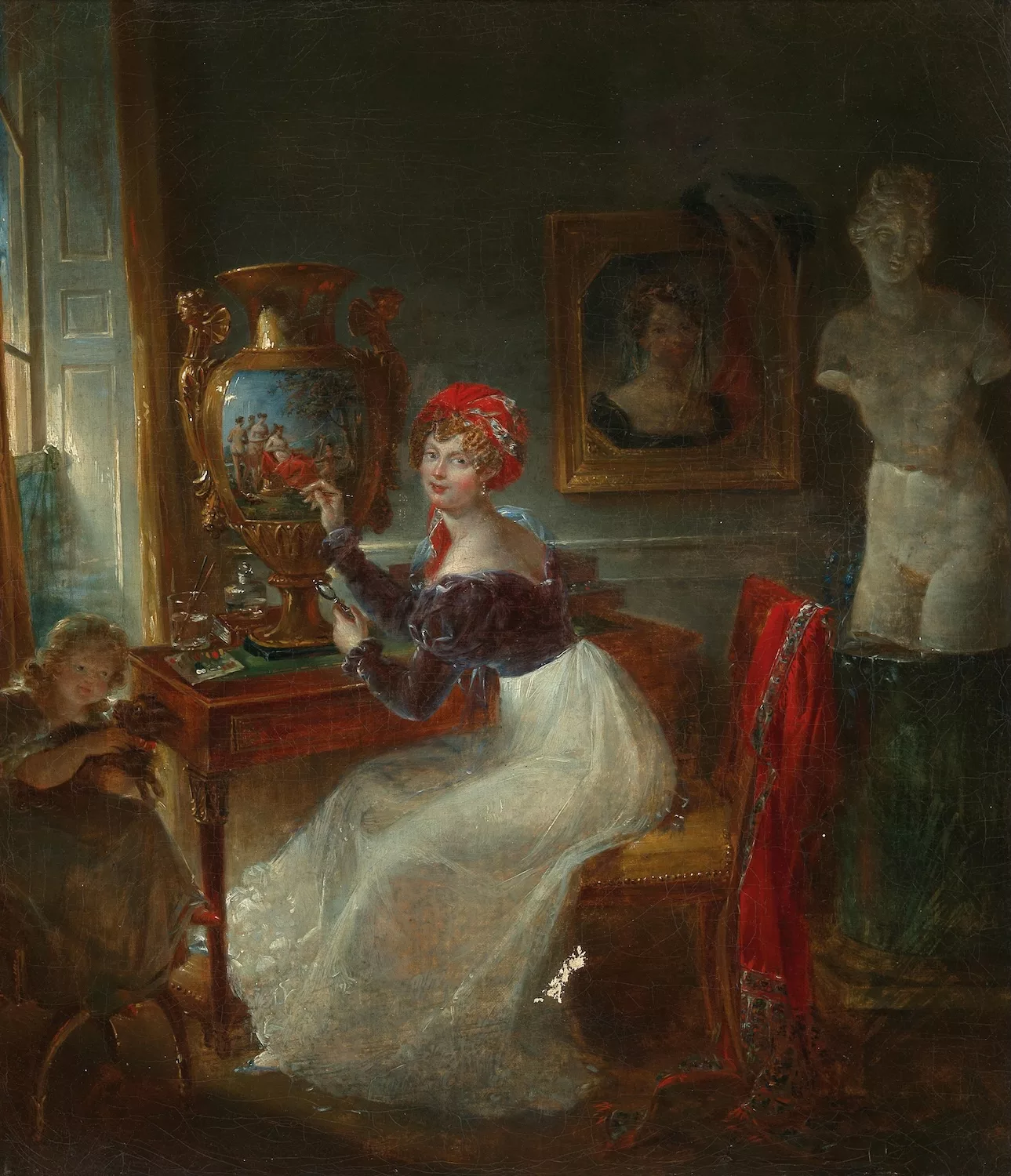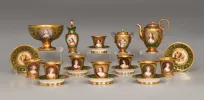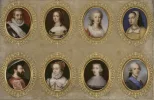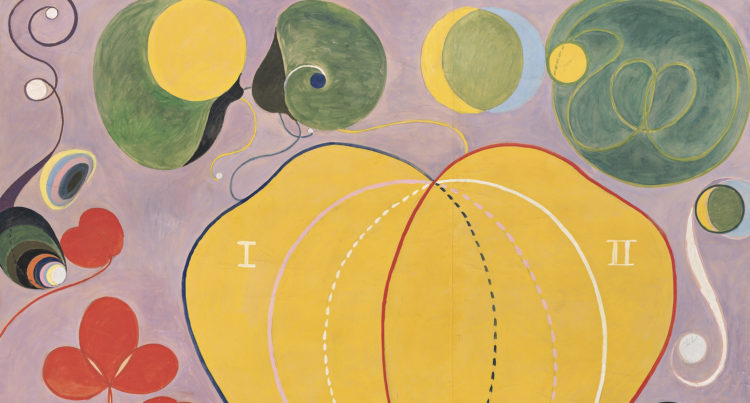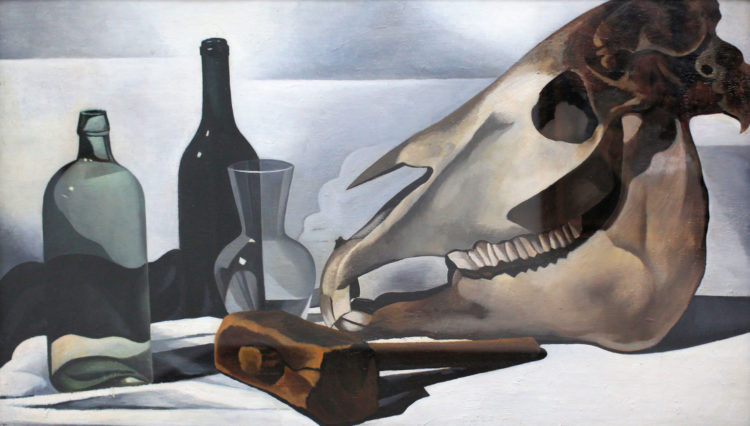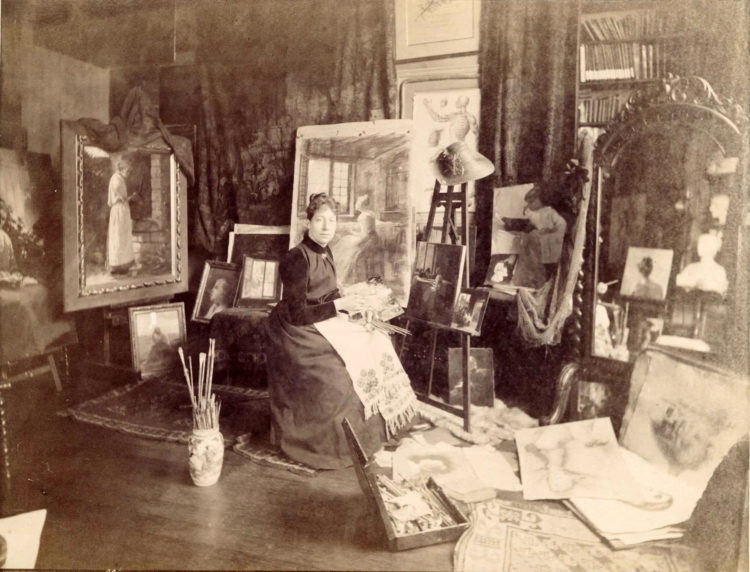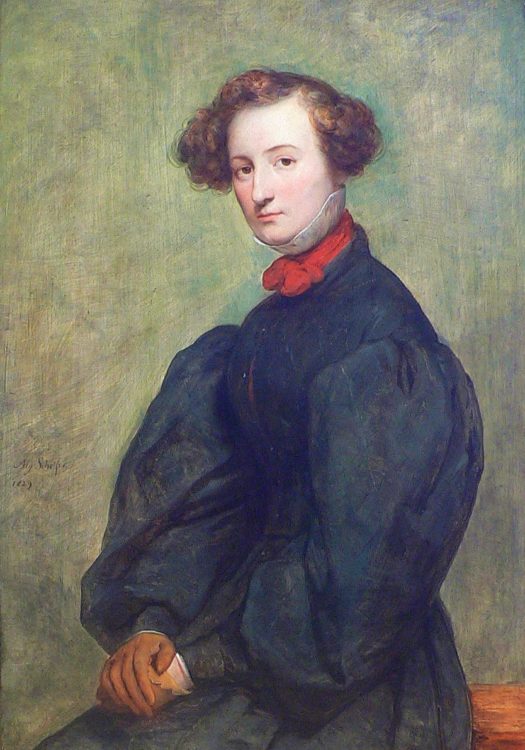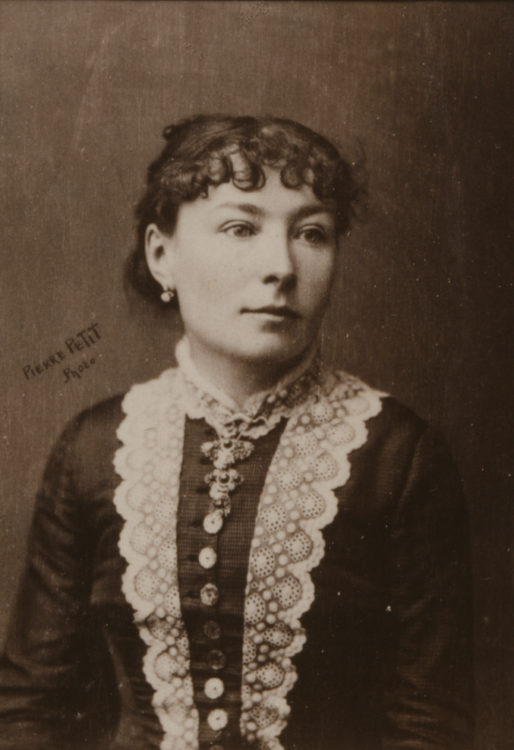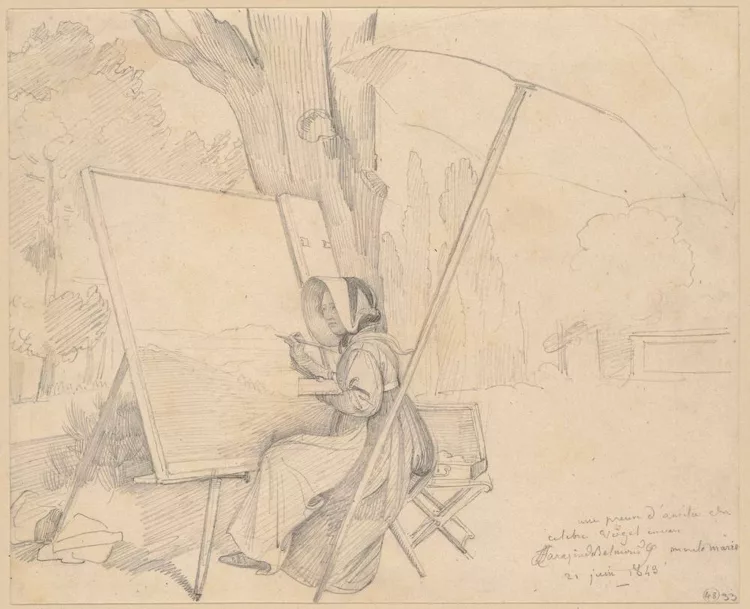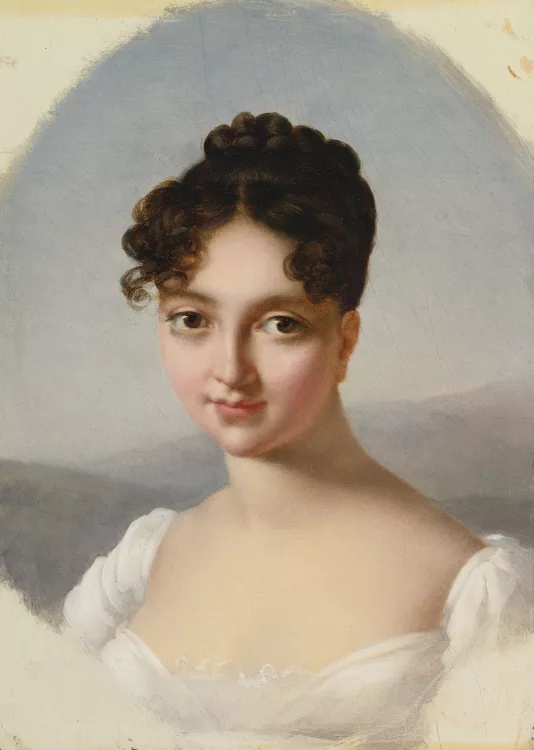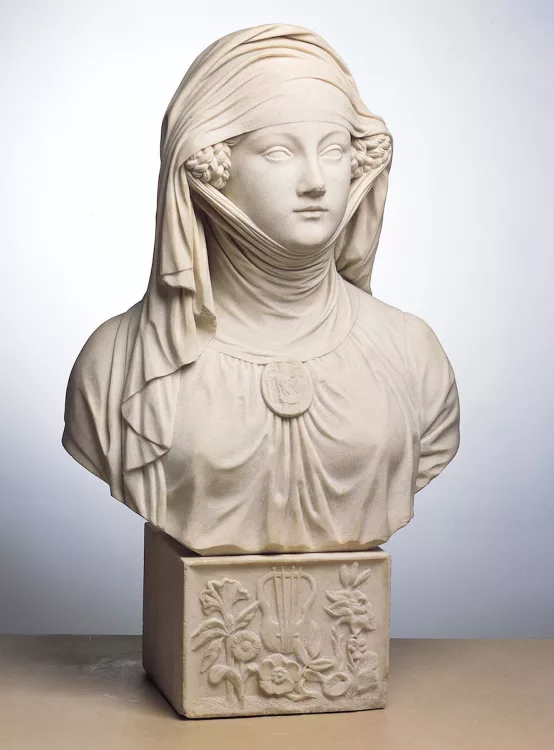Marie-Victoire Jaquotot
Anne Lajoix, Marie-Victoire Jaquotot 1772–1855, peintre sur porcelaine, Paris, Société de l’Histoire de l’Art Français, Archives de l’Art Français, t. XXXVIII, 2006
→Élisa Magnani, Les Demoiselles de Sèvres, Marie-Victoire Jaquotot, copistes pas copieuses
French porcelain painter.
The daughter of a clerk in the Châtelet courts, Marie-Victoire Jaquotot was born into a family uniting the legal bourgeoisie of her father’s side with the goldsmith profession of her mother’s. On 17 June 1794, she married the talented painter of miniatures Étienne Charles Le Guay (1762–1846), and received her artistic training from him. At the time he was employed by the Parisian workshop Dihl et Guérhard, which in the 1790s pioneered research into vitrifiable colours and the manufacture of painted plates. In June 1801 the couple divorced, and in the same month the young artist, who had already presented some of her drawings at the 1799 Salon, sold her first works to the Manufacture de Sèvres. This was the beginning of a collaboration that would endure until 1842. Alexandre Brongniart took over the direction of the workshop, and soon recognised her talent and encouraged her career. He believed that the permanent nature of porcelain painting made it well suited to recording the masterpieces of painting, and thus encouraged their reproduction in the medium. M.-V. Jaquotot’s virtuosity was the ideal instrument for his project.
The artist’s first works for Sèvres were relatively modest. They are often medallions with antique busts imitating Sardonyx cameos, and were painted on cups, vases or as part of the decoration for the library of the Premier Consul in Saint-Cloud, after an idea by Charles Percier and Pierre Fontaine. She soon received commissions for more ambitious pieces. In 1806 she was entrusted with the Tea Service of Famous Women; A. Brongniart noted that M.-V. Jaquotot was a great painter of women’s portraits. She also contributed to the ‘Olympic’ coffee service presented by Napoleon to Tsar Alexander in 1807. Skilled at working from life, she painted Napoleon’s portrait and later that of the Duchess of Berry.
M.-V. Jaquotot was an excellent copyist: as early as 1814 she created a copy of Leonardo da Vinci’s (1452–1519) La Belle Ferronnière (around 1490) for Empress Joséphine. She made exceptional copies after Raphael (1483–1520), but also after contemporary artists such as Anne-Louis Girodet (1767–1824; Danae, 1799; Mort d’Atala, 1808) and François Gérard (1770–1837; L’Amour et Psyché, 1798; Corinne au cap Misène, 1819–1821).
She found particular favour with Louis XVIII, who greatly appreciated miniature painting, and notably admired in 1816 her copy of Raphael’s La Belle Jardinière (1507), part of the lunch service known as the “great painters” service. In the same year the title “porcelain painter of the king’s cabinet” was conferred on her, and, from 1821, a pension of 1,000 francs. M.-V. Jaquotot was received at the Tuileries to present her copy of L’Amour et Psyché to the King in person. In testament to her reputation, she was paid the extraordinary sum of 16,000 francs for this painting. During the early years of the Restoration she painted several portraits of the king in different formats. The most notable commission from Louis XVIII was for a collection of historical portraits of sovereigns, princes and men of letters, destined to be mounted on the lid of the royal snuffbox. This collection was applauded by the critics and was continued until the July Monarchy. A porcelain case, a sort of medal box, was commissioned from the Sèvres manufactory to house the portraits.
M.-V. Jaquotot continued to enjoy high standing under Charles X, who appointed her “the king’s first porcelain painter” by order on 24 May 1828. Under the July Monarchy she obtained funding for travels in Italy, and in Bologna and Florence copied the masterpieces of Italian painting. Her renown extended beyond France’s borders and she was often cited as an example of women’s talent in painting.
A biography produced in partnership with the Louvre Museum.
© Archives of Women Artists, Research and Exhibitions, 2025


